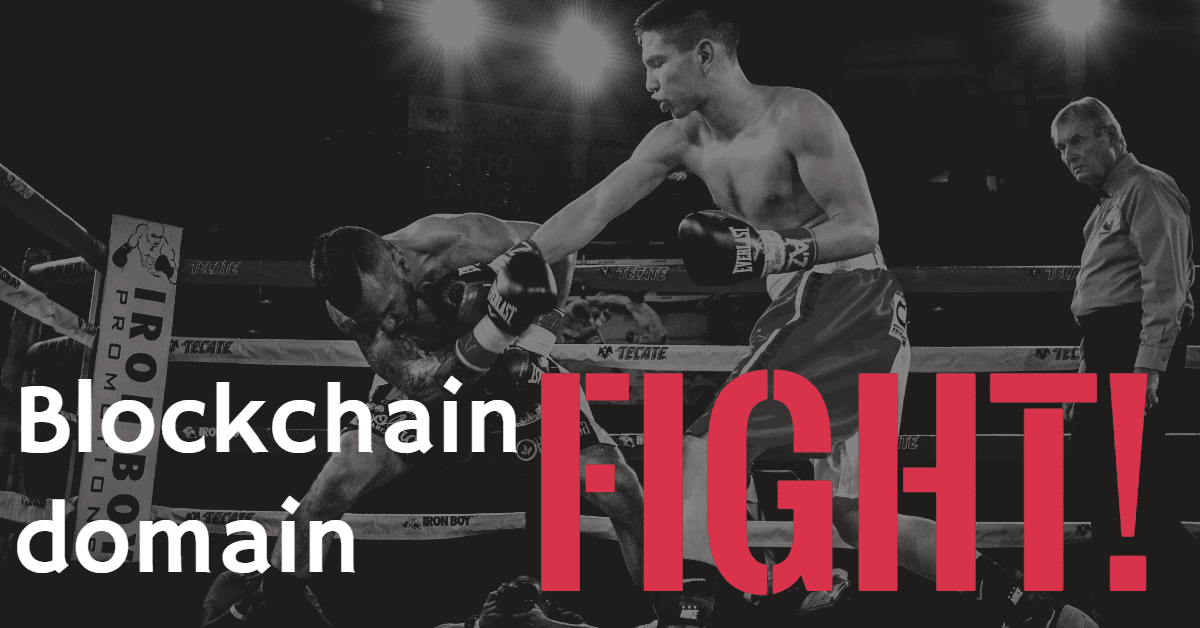Sparks fly on the blockchain domain panel during NamesCon – Domain Name Wire
Rival protocols argue about name collisions.
A panel on blockchain domain names at NamesCon today devolved into a battle between Handshake supporters and Unstoppable Domains founder Brad Kam.
Unstoppable Domains recently sued a technology provider that introduced second-level .wallet domains based on the Handshake system. Unstoppable offers a competing .wallet extension in its own system.
The fireworks began during introductions, when Chris Jeffrey, co-founder of the Handshake protocol, attacked Kam for filing the lawsuit.
The majority of the panel dealt with name collisions and conflicts between the protocols. Here is an example of the confrontation:
Thomas Barrett, co-founder of Encirca, which supports many competing blockchain domains, concludes by commenting on what blockchain domains are all about: …so web3 is about consumers taking back control of their privacy and personal data. So it is the use case, very different from Web2, which is really about companies getting online and doing e-commerce.
Chjango U., dWeb Foundation: [interjecting] -and sue people to create their territory.
Brad Kam: Can we keep it high? I think we focus too much on Unstoppable. Let’s talk about the industry.
Geoffrey: [interjecting] – No, no, this is the most relevant thing to talk about right now because…
Zhang U.: [interjecting] — It is a precedent-setter.
Geoffrey: [continuing] …these decentralized naming protocols are susceptible to this type of attack. Someone like you [referring to Kam] will use an older naming system, such as the trademark office, to go after someone who builds on these protocols. The good news is that I think you lose in the long run. And I say this without any sense of irony or levity: [Unstoppable] is the enemy.
This is the person [Kam] that these decentralized naming protocols are meant to protect you from. And eventually they will die out.
The parties disagreed on whether more than one blockchain top-level domain can coexist. Kam argued that they cannot, and that “social convention” will play a large role in determining which blockchain domain will be able to exclude the others:
Comb: Imagine what would happen if I have brad.crypto and someone else gets a brad.crypto over there. And then someone trying to send me a million dollars sends it to the wrong person. It’s a system that doesn’t work. So what’s going to end up having to happen here is that there’s going to be a … you can’t have more than one TLD that works in the nature of the same TLD. Otherwise, apps just won’t support it. So what’s going to happen is apps will say, “Hey, this is dangerous for my users. I can’t…I have to shut this down.” So that’s why naming is actually a social convention, not just a technology. So you have technology plus social convention.
Ray King, founder of both a registrar that sells Handshake domains (Porkbun) and a company that sells ICANN-approved TLDs, but who took a neutral stance during the panel, asked who decides which competing protocol gets exclusive rights to a string. Kam replied:
Comb: It is the same as it would be for any IP. So what’s really happening is you have first commercial use, you have market penetration… you have all the same reasons why you can’t launch the McDonald’s restaurant, it’s the same reason.
At this point, an audience member asked how you could ever prevent these types of collisions given the inherent capabilities of blockchain technology.
Audience questions: I’m just curious how you can prevent collisions in this space because at the end of the day, blockchain domains are NFTs. And this is a problem with NFTs in general, which is that there’s no authentication, right? So you can make a million NFTs for the same thing, whether it’s a painting or a picture or something else. And there is no way to authenticate it, which is basically a fundamental feature of decentralized systems.
Kam reiterated that he thinks it comes down to social convention.
Another audience member asked Kam what would happen in the next ICANN round if someone applied for a TLD that matched one that Unstoppable Domains already operates. Kam replied:
Comb: I think this is a big question for the industry. Ultimately, what I hope happens is that…it’s not really so much about ICANN, is it. It’s about the company trying to buy that TLD from ICANN or buy the rights to that TLD from ICANN. And what I hope happens is that companies understand that, you know, top-level domains that have developed and have really gained a foothold in the market, that they shouldn’t collide. And what is really the problem we have here is very similar to the problem we had when .com was launched. There was no ICANN when .com was launched. But what happened was that there was a new technology platform that changed the internet and changed the world. And I believe that NFT domains have the same ability to change the world.
Kam argues that no one should apply for .crypto, .bitcoin, .nft or any of the other domains Unstoppable launched when the new ICANN round opens.
I left the session thinking that there is a reason the existing domain name system works so efficiently: because it is centralized. Despite all the promises of decentralization, people want the benefits of centralized systems that work the way they expect them to.



